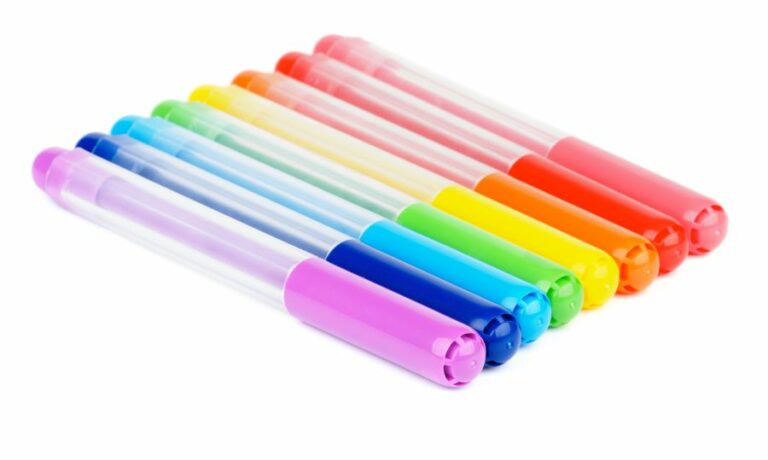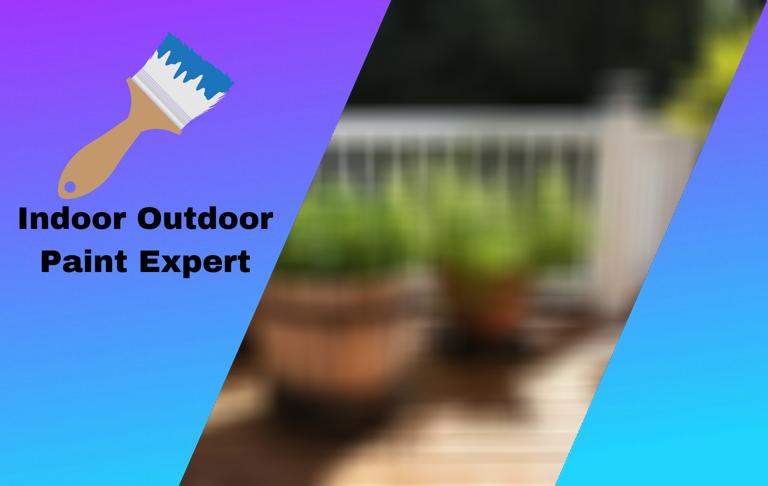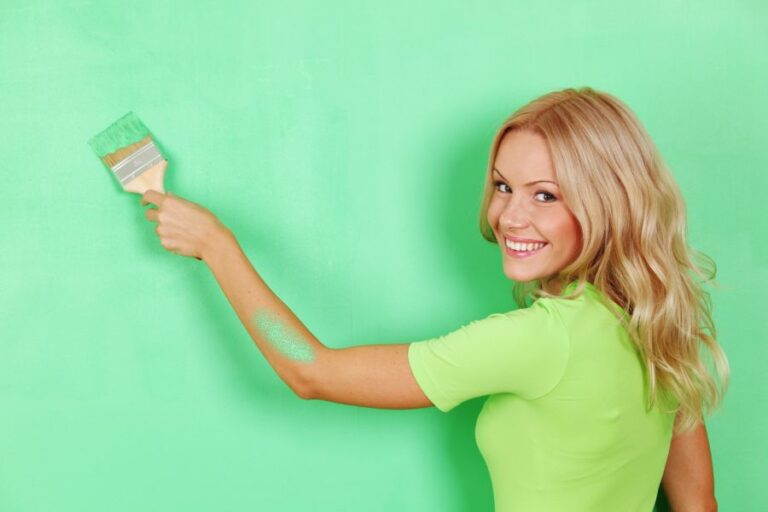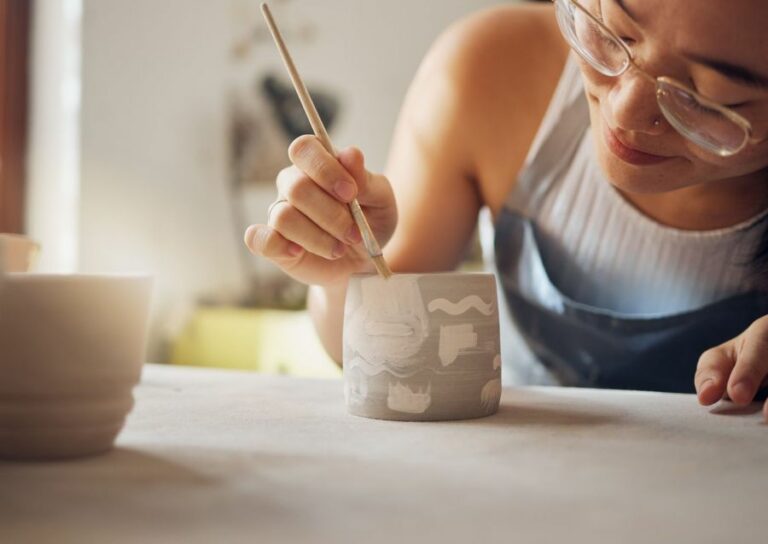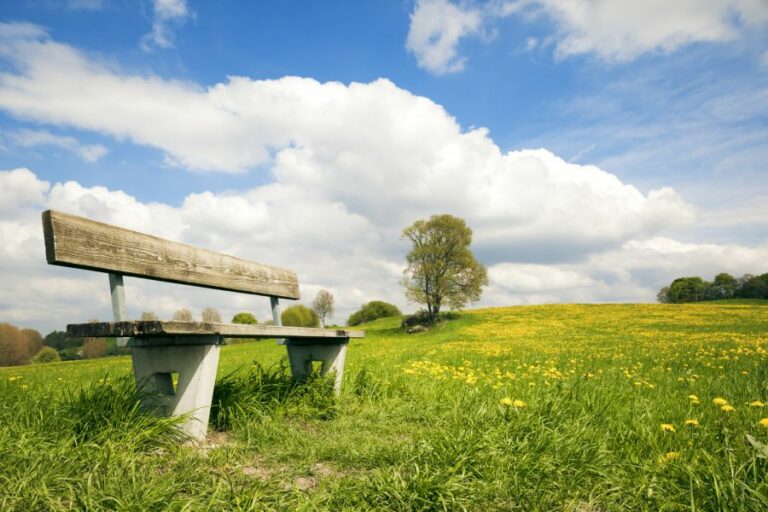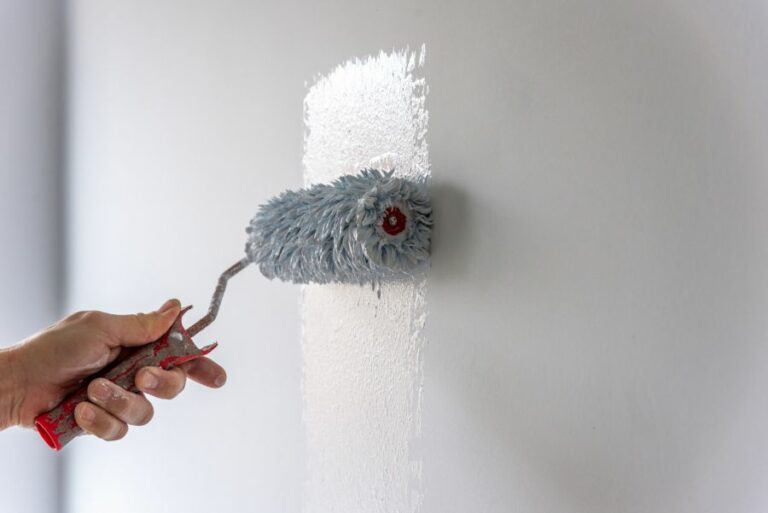Can You Mix Indoor And Outdoor Paint, 25 Things You Should Know
Have you ever been tempted to repurpose leftover indoor paint for an outdoor project or vice versa? You’re not alone! It’s time to address the problem: Can you mix indoor and outdoor paint? In this blog post, we will expertly dissect the science and chemistry behind paint formulations, the crucial differences between indoor and outdoor paint, and the consequences of using one instead of the other.
Can you mix indoor and outdoor paint:rong>
Combining indoor and outdoor paint can lead to several issues, such as a shortened lifespan, compromised adherence, inconsistent drying, and VOC imbalance. Mixing the two can dilute each paint’s unique attributes, diminish its effectiveness, and pose potential health risks. Instead of blending them, seeking professional guidance or exploring creative alternatives is recommended.

Discover the critical differences between indoor and outdoor paint, the potential consequences of mixing them, and expert tips to achieve the perfect paint job. Learn valuable information to make informed decisions for your next painting project.
Contents
- 1 Is it Possible to Combine Indoor and Outdoor Paint?
- 2 Is it Possible to Utilize Exterior Paint for Interior Painting Applications?
- 3 Is it Possible to Combine Various Types of Paint?
- 4 Is it Possible to Paint Both the Exterior and Interior of a Building the Same Color?
- 5 Is it Possible to Combine Two Distinct House Paints?
Is it Possible to Combine Indoor and Outdoor Paint?
• The Crucial Dichotomy: Indoor and Outdoor Applications
– Interior Paint: Characteristics and Composition
Indoor or interior paint often features compounds specifically formulated to provide a captivating visual allure while retaining essential durability.
Considering the absence of punishing external elements, interior paint typically contains pigment concentrations that ensure vivid, consistent colors resistant to the wear and tear of daily life.
- Low VOCs: Volatile organic compounds (VOCs) are hazardous chemicals often emitted in gaseous form from certain paint ingredients. Interior paint generally contains fewer VOCs, ensuring healthier indoor air quality.
- Adhesiveness: Primarily composed of resins that enhance product longevity and ease of application, interior paint adheres well to a variety of surfaces found within residential and commercial spaces.
- Scuff Resistance: Interior paint’s unique formulation imparts resistance to blemishes such as scuffs, scratches, and gashes, an attribute vital in maintaining an alluring appearance.
– Exterior Paint: Attributes and Essence
In contrast, exterior paint is specifically designed to prevail over natural elements, including ultraviolet radiation, precipitation, and fluctuating temperatures. Emphasizing resilience and resistance, exterior paint is broadly characterized by the following attributes:
- High VOCs: Due to harsh environmental conditions, exterior paint inherently contains elevated levels of VOCs. The elevated VOCs contribute to the paint’s durability and weatherproofing capabilities.
- Flexibility: Exterior paint remains pliable after application, permitting it to withstand surface contraction and expansion brought on by temperature changes without cracking or peeling.
- UV Protection: Formulated to repel the detrimental effects of sunlight, exterior paint resists fading caused by ultraviolet radiation exposure.
- Water Resistance: Indispensable in confronting damp or humid conditions, exterior paint effectively shields surfaces from water penetration and subsequent deterioration.
• Experimental Alchemy: Consequences of Mixing Indoor and Outdoor Paint
Venturing into uncharted territory, the fusion of indoor and outdoor paint raises concerns and consequences one must address. Let us fathom the depths of this perplexing inquiry:
- Shortened Lifespan: The intermingling of their distinct chemical compositions dilutes each paint’s unique attributes, potentially diminishing their effectiveness and durability when subjected to their intended environments.
- Compromised Adherence: The capacity of paint to adhere to surfaces may suffer through amalgamation, resulting in inferior coverage, peeling, or flaking.
- Inconsistent Drying: As paint pooling occurs, streaks and uneven coats may transpire hence, hampering the desirableness of the final outcome.
- VOC Imbalance: Blending low-VOC interior paint and high-VOC exterior paint may create an unstable concoction, culminating in heightened VOC emissions and potential health risks posed to inhabitants or the environment.
• Venturing Beyond the Commonplace: Creative Approaches and Alternative Solutions
Exploring creative approaches outside of conventional painting practices remains fraught with risk. Yet, in pursuit of novel results, the following considerations arise:
- Small-Scale Experimentation: Before full-scale application, thoughtfully test mixed paint on an inconspicuous, representative surface. Monitoring the paint’s performance over time can provide invaluable insight.
- Unorthodox Artistry: Deviating from customary methods, mix adjacent paint layers within a single painting, affording a distinctive visual effect while maintaining the foundational functional properties.
- Expert Consultation: Seek the wisdom of seasoned professionals and specialty paint retailers who can provide bespoke guidance based on their vast experience and expertise.
In conclusion, a prudent examination of the compatibility of mixing indoor and outdoor paint reveals potential pitfalls and drawbacks. However, the prospect of blending these distinct paint types fuels the imagination, but the inherent risks and compromised integrity caution against their amalgamation.
Instead, consider alternative creative endeavors or seek the guidance of painting professionals to achieve the desired outcome while maintaining quality and safety standards.
Question | Answer |
|---|---|
Can you mix indoor and outdoor paint? | No, it is generally not recommended to mix indoor and outdoor paint. Indoor paint is designed for interior use and has specific properties for that purpose, while outdoor paint is made to withstand exterior conditions. Mixing them can compromise the performance of the paint and may lead to issues in durability and appearance. |
Is it Possible to Utilize Exterior Paint for Interior Painting Applications?
In the realm of home renovation, selecting the appropriate coverings for your sanctuary’s substratum requires utmost scrutiny. Often, novice redecorators ponder if the vibrant hues of exterior paint can harmoniously coincide with their domicile’s inner sanctum.
Delving into the peculiarities of paint constituents and the implications of interchangeability is the key to answering this enigmatic inquiry.
• The Composition Conundrum: Between Interior and Exterior Paints
– Elemental Elixirs: Ingredients to Consider
When comparing the components of interior and exterior paints, it is helpful to examine the amalgamation of resins, solvents, pigments, and additives. Each constituent contributes to the overall performance and durability, thereby influencing their suitability for specific applications.
Resilient Resins: Binding Layers and Structural Integrity
- Interior Paint Resins: These indoor-adapted binders provide adequate adhesion while prioritizing pliability to reduce cracking. Despite their flexibility, these compositions possess minimal defenses against inclement weather and the relentless solar barrage.
- Exterior Paint Resins: The tenacious binders found in external coatings are engineered to withstand harsh external vicissitudes. These formidable compounds form a stalwart shell that resists moisture, cracking, fading, and chalking.
Snug Solvents: Agents of Effortless Application
- Interior Paint Solvents: The purpose of these volatile organic compounds (VOCs) is to expedite paint dissemination by liquefying ingredients, ensuring a seamless, hastened spread. Alas, they release fumes; interior paint formulations embrace low-VOC solvents to mitigate health hazards.
- Exterior Paint Solvents: External painting applications generally necessitate sturdier solvents to tackle demanding conditions. Consequently, these high-VOC solvents can emit potentially undesirable concentrations of noxious fumes when used in confined indoor spaces.
– The Pigment Predicament: Hues of Durability vs. Elegance
- Interior Paint Pigments: Indoor pigments favor an expansive chromatic panorama that caters to diverse themes and aesthetics. These colorants yield sumptuous shades and crisp finishes, promoting an inviting ambiance without necessitating stringent weather-resistance.
- Exterior Paint Pigments: The prevailing pigments in exterior paints focus chiefly on endurance, bright appearance, and ultraviolet light resistance. While the chromatic offerings are not as rich, these tints prioritize fortitude against nature’s incessant onslaught.
• Adorning the Abode: Ramifications of Replacing Interior with Exterior Paint
– Domestic Discomfort: Toxins and Odors Invading the Inner Sanctum
Introducing high-VOC solvents into confined environments may lead to discomfort and health complications.
Utilizing exterior paint indoors risks exposure to elevated VOC levels, exacerbating allergies, respiratory issues, or headaches. Furthermore, the persistent aroma can diminish the pleasantness of the dwelling.
– Aesthetic Sacrifices: Compromising Cohesiveness and Texture
An endeavor to exploit exterior paint’s protective attributes indoors can culminate in an unsightly result. Interior surfaces necessitate a balance between durability and visual allure. Utilizing exterior paint may generate a dull, unrefined finish that detracts from the room’s aesthetic cohesion.
– The Unexpected Expense: Imprudence Begets Monetary Misadventure
While the prospect of multifunctional paint might evoke frugal fantasies, this approach frequently engenders unforeseen expenditures. Misapplying paint formulations inflict unnecessary wear and tear, demanding costly repairs or replacements.
Hence, adhering to the appropriate paint classifications promotes mindful wallet preservation.
• In Conclusion: Assessing the Commensurability of Exterior Paint for Indoor Use
Synthesizing the evidence and utilizing exterior paint for interior applications engenders a plethora of undesirable consequences. Subjecting the inner sanctuary to paint constituents intended for external duress undermines the dwelling’s comfort, aesthetics, and fiscal prudence.
Therefore, the discerning decorator exercises astuteness in adhering to the delineation between interior and exterior paint classifications.
Is it Possible to Combine Various Types of Paint?
Painting allows artists the flexibility to express themselves using various creative techniques, each with its own distinct characteristics. Among the plethora of tools in the painter’s arsenal, the formulation of paints is of timely interest.
In the midst of the multitude of options, have you pondered the possibility of blending disparate categories of paint? Delve into the intricate dance of chemistries within diverse varieties of paint and the enigmatic outcomes of their mingling.
• Oil and Watercolor: Immiscible Separate Entities
The old adage claiming “oil and water don’t mix” rings true when it comes to oil-based and watercolor paints. Oil paints incorporate oil as the binding agent, bestowing a sumptuously luxuriant quality, while watercolors rely on water-soluble binders, imparting a diaphanous touch.
Moreover, a fundamental principle that governs these complex systems can be traced back to their hydrophobic (oil) and hydrophilic (water) tendencies.
Upon experimenting with this ostensibly odd pairing, one will immediately encounter a curious phenomenon. Namely, the two types of paint will not coalesce into a singular cohesive medium.
Instead, they will keep their own territories, creating a patchy, uneven appearance that may disappoint the artist seeking deliberate synthesis. Thus, oil-paint and watercolor blends are ill-advised for standard art-making purposes, but let’s investigate further.
• Acrylics and Oil: A Serendipitous Encounter
Contrary to the incompatible relationship between watercolor and oil, acrylics and oil paints can be surprisingly harmonious companions in certain instances.
A quirky stipulation lies in the order of application; applying acrylics as an underpainting, followed by subsequent layers of oil paint, can result in a successful synthesis of both media. However, attempting the reverse strategy will result in unforeseen difficulties because the two materials dry at disparate rates.
Reasoning for the success of this sequence can be found in the porous nature of acrylic paint. Acrylics, being water-based, act as a receptive canvas for oil paints, providing the required adhesion to secure the oil paint layers applied on top.
Bear in mind, though, that incorporating oil directly into acrylic paint will nullify the desired outcome, resulting in the unwanted separation of these mediums. Hence, the artists must be vigilant about layering and avoid direct mixing where possible.
• Watercolors and Gouache: A Duet on Paper
Watercolors and gouache paints exhibit a natural affinity for each other, facilitating smooth integration into a single composition. Both mediums rely on water-soluble binders, which are conducive to intermingling.
At first blush, this may suggest an effortless partnership, but subtler details emerge that reward a savvy artist’s attention.
Gouache paints offer a more opaque quality compared to their watery counterparts, allowing them to effectively conceal the watercolor layers beneath. Thus, artists should take deliberation while inversing the layering order or mixing the mediums to achieve unconventional effects.
Combining watercolors and gouache opens previously veiled doors to realms of the chromatic invention and exploration of light and shadow on the canvas.
• Syncretism in Unison: Igniting the Imagination
Artists are often risk-takers, unafraid to embark upon curious paths in search of uncharted expressions. Mixing different types of paint can lead to unforeseen challenges and serendipitous finds, rendering the canvas a tapestry of experimentation.
Above all, understanding these media’s inherent properties and compatibility enables the artist to approach this chemical dance with informed curiosity, maintaining functionality while experimenting and pushing the boundaries of their art.
Type of Paint | Water-Based | Oil-Based | Acrylic |
|---|---|---|---|
Water-Based | Yes | No | Yes |
Oil-Based | No | Yes | No |
Acrylic | Yes | No | Yes |
Is it Possible to Paint Both the Exterior and Interior of a Building the Same Color?
• Intriguing Possibilities: Combining Exterior and Interior Color Schemes
The crux of this artistic endeavor lies in the amalgamation of various chromatic segments into a congruous whole. Discerning the emulsion compatibility between exterior and interior coatings can either heighten the house’s visual appeal or tarnish its allure.
Besides considering personal preferences, it is essential to ponder over contextual factors and compatibility parameters.
– Examining Color Theory: Crucial to Painting Success
A fundamental comprehension of color theory is vital in evaluating the feasibility of mirroring exterior and interior hues. Familiarize yourself with the nuances of primary, secondary, and tertiary colors and juxtaposition techniques such as complementary and analogous arrangements.
- Delineating Chromatic Harmony: By balancing warm and cool tones, the creation of a soothing milieu becomes feasible. Adhering to a monochromatic scheme or a selective chromatic palette simplifies color coordination and fosters harmony.
- Contrast and Transition: Sudden color changes can disrupt the visual flow of a domicile, leading to a jarring effect. Intermingling analogous colors or gradually morphing from one hue to another augments spatial coherence.
- Mapping Light and Shadow: Ensuring appropriate color distribution is paramount. Dark tones tend to shrink spaces and commandeer light, while delicate shades can amplify the dimensions of an area. Scrutinize the home’s architecture and the influx of light to pinpoint optimal color placement.
– Dissecting the Exterior’s Topographical Significance
Conducting an in-depth inspection of the abode’s surroundings is crucial when opting for a comprehensive chromatic assimilation.
- Neighborhood Integration: Respecting the architectural traits of neighboring houses is essential for visual flow on a macro scale. Adapt the interior-exterior color fusion to conform with the area’s dominant style, honoring local trends without surrendering originality.
- Surrounding Nature: Align the fusion with the region’s natural essence. Opt for paint shades that merge harmoniously with the terrain, forests, beaches, or mountains.
- Climate Considerations: Factor in local weather patterns when formulating the ideal color scheme. Heat absorption and reflection capabilities alter as a function of hue, making it essential to acknowledge the exterior paint’s interaction with climatic conditions.
– Interior Design’s Multifaceted Role in Color Selection
The domain of interior design entails a multitude of aspects that profoundly influence the feasibility of interior-exterior color coordination.
- Personal Taste and Identity: Infuse the living space with individual flair while preserving an upscale aesthetic. Navigate between daring designs or time-honored styles, anchoring the color choice on a self-assured artistic expression.
- Functionality Meets Aesthetics: The home’s practical aspects intertwine with chromatic decisions. Matching the exterior and interior can yield a cohesive composition when executed with precision.
- Furniture and Accessories: The decor’s interplay with prominent colors cannot go unnoticed. A meticulous assessment of furnishings, textiles, and fixtures is critical to establishing the finishing touch in amalgamating interior/exterior hues.
• Permutations and Pitfalls: Risks and Benefits
– Risks
- Bland Ambiance: An overly simplistic chromatic arrangement can lead to a lackluster atmosphere devoid of character.
- Imbalanced Proportions: Squandering natural light or accentuating small spaces negatively impacts the domicile’s allure.
- Surrounding Disarray: Disregarding the neighborhood’s architectural essence can produce an incongruous result.
– Benefits
- Visual Continuity: Uniformity in color schemes fosters a seamless transition between interior and exterior spaces.
- Streamlined Decision Making: Abiding by a continuous palette simplifies the painting process and color selection.
- Integrated Style: Fusing the tones enables the home to reflect a well-curated, unified aesthetic vision.
• Conclusion: Balancing Creativity and Cohesion
Painting the exterior and interior the same color poses an intriguing design challenge, brimming with potential rewards yet not without inherent pitfalls.
Striking a delicate balance between individual taste, environmental compatibility, and architectural considerations is crucial in achieving an unparalleled painting enterprise. Artistic intuition and meticulous observations pave the way for a stunning and coherent living space.
Is it Possible to Combine Two Distinct House Paints?
• Unveiling the Enigma of Coadunation
When envisioning a home renovation, a common dilemma revolves around the central question: Can we truly amalgamate two diverse house paints?
– The Kaleidoscope of Colors: A Divergent Analysis
Embracing the panache of multiple hues in a single room may seem like an impossible challenge, yet professionals frequently embark on such quests with exuberance. One might think blending disparate colors results in an unparalleled melange. However, the reality might surprise you.
Water-Based vs. Oil-Based Paints: A Compelling Dichotomy
When it comes to paint synthesis, understanding the core constituents is crucial. Paints are primarily categorized into two quintessential types: water- and oil-based.
Water-based paints, also known as latex or acrylic paints, are heralded for their quick drying properties, lower volatile organic compounds (VOC) emission, and facile cleanup routines.
On the other hand, their oil-based counterparts exhibit a higher degree of sheen and longer durability and require mineral spirits for cleanup.
Attempting an audacious coalition between the two categories may prove frustrating, as their composition begets an incongruous admixture.
Water and oil don’t usually intertwine, and misadventures in uniting them yield unintentional consequences of paint peeling, inconsistent texture, and lackluster visual appeal.
Harmonizing Latex and Acrylic Paints: An Avant-Garde Approach
Tackling the fusion of water-based paints, such as latex and acrylic variants, seems relatively more feasible. However, vigilance is paramount to guarantee a homogeneous integration, especially while discerning disparate sheens, finishes, and manufacturers.
Avoid the pitfall of indiscriminate conflation by heeding these expert tips:
- Analyze Color Compatibility: Ensure the colors are harmoniously aligned, lest your blend results in an insipid or dissonant chromatic palette.
- Gauge Finish and Sheen: Mixing paints of different finishes and sheens might lead to an odd final product. Ascertain uniformity before the blending process.
- Manufacturer Consistency: Stick to paints produced by the same manufacturer, as conflicting formulations could pose issues.
- Testing: Amalgamate in small quantities initially to test the fusion. Observe color uniformity, drying patterns, and adhesion quality.
– Brushstrokes of Wisdom: Expert Advice for Combining Paints
Quandaries of Quantification: Proportion and Ratio Soliloquy
Measuring the precise proportion of each paint hue is rather paramount. Incorporate a 50/50 ratio for a seamless synthesis or experiment by incorporating varying ratios to achieve the desired chromatic effect with caution. Maintain a detailed record of your ratios to help replicate the perfect shade.
Venturing Beyond Monochrome: The Multiplicity of Tints and Shades
Don’t limit yourself to the confines of monochrome. The world of color spectrums offers an endless vista of possibilities. Combine colors judiciously, and you might unveil a bespoke shade that no pre-existing swatch could embody.
• Concluding Thoughts: The Art and Mastery of Paint Synthesis
Embarking on the sophic quest to mix two different house paints is akin to an artist unveiling the myriad enigmas of their palette. A well-executed fusion inspires verve and imbues the room with a scintillating splendor. Contrarily, errors in this pursuit may result in irreparable consequences.
Heed the lessons shared above to traverse this path of chromatic alchemy. Remember Jim Rohn’s sage words, “Always be willing to learn, especially from the experiences of others. It’s cheaper that way.”
Seek counsel from experts in the field or indulge in professional home renovation guidance for a successful odyssey into the world of paint amalgamation.
Type of Paint | Mixing Possibility | Considerations |
|---|---|---|
Same type (e.g., latex with latex, oil-based with oil-based) | Yes | Make sure both paints have the same sheen and base (e.g., water-based or oil-based). |
Different types (e.g., latex with oil-based) | No | The paints will not bond properly, resulting in clumps or separation. |
Same type, different sheens (e.g., flat latex with semi-gloss latex) | Yes, but with caution | The resulting mix will have a different sheen than the original paints. Test and adjust as needed. |

